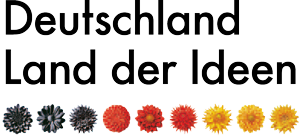In order to encourage more people to use public transport, the service must be more flexible, more individual and better connected. This can be achieved by intelligently integrating on-demand services into the public transport system.
Udo Onnen-Weber, Project Manager, KOMOB
In order to encourage more people to use public transport, the service must be more flexible, more individual and better connected. This can be achieved by intelligently integrating on-demand services into the public transport system.
Werner Linnenbrink, Head of Mobility Service, Osnabrück Municipal Utilities

To implement an intermodal mobility strategy of scheduled services and on-demand shuttles, HubChain aims to develop and test software that dovetails these two transport operations, taking account of accessibility. For this purpose, many intermodal mobility conflicts between large regions and trunk roads in rural areas have been evaluated. In addition, strategies for digital solutions for ordering, dispatching and passenger consolidation have been developed and, in some cases, already programmed.
In concrete terms, this means: scheduled services and on-demand services have to be linked up in real time. Apps have been developed for passengers to plan and book their intermodal travel chain of on-demand shuttle and scheduled services without any waiting times. For the operator of on-demand services, digital solutions were designed that enable intelligent, demand-driven and efficient fleet management.
The HubChain project has implemented this mobility scenario at two sites, programmed two variants of the required software and trialled it in the Osnabrück region (HUBI, with autonomous shuttles) and the Elde source region in Mecklenburg-Western Pomerania (ELLI, with electric vans and volunteer drivers).
Good to know
- The project is being implemented by a consortium consisting of Osnabrück Municipal Utilities, the Wismar Centre of Excellence on Rural Mobility (KOMOB), the German Aerospace Centre, Hacon Ingenieurgesellschaft mbH, the Institute for Climate Protection, Energy and Mobility (IKEM) and Dornier Consult.
- The project includes test beds on the outskirts of Osnabrück, the rural town of Bad Essen and the peripheral rural areas of the Röbel district, Mecklenburg, Lake District.
- In 2020, HubChain won the 2020 Real-World Laboratory Innovation Award of the Federal Ministry for Economic Affairs and Energy.


Interview with Udo Onnen-Weber, Project Manager, KOMOB, und Werner Linnenbrink, Head of Mobility Services, Stadtwerke Osnabrück
How did you come up with the idea for your project?
Onnen-Weber: Osnabrück Municipal Utilities and KOMOB have been working together for many years. The intermodality of small shuttles and express buses has been the fundamental idea for new mobility in rural areas already for a long time. However, this will not work without digital solutions. The result was the HubChain idea, where operations management as well as user communication should respond to these challenges.
What challenges did you face during implementation?
Linnenbrink: In Osnabrück, we tested the new on-demand service with the autonomous shuttle called "Hubi". The challenge on the software side was above all the integration of interfaces to the vehicle. In addition, pioneering work was required to overcome obstacles in terms of approval law.
Onnen-Weber: System requirements and digitalization had to be brought into line. This meant that we had to develop a completely new intermodal local public transport system, identify the logistical control systems for it and then programme a digital solution.
Where do you see your project in five years?
Linnenbrink: In 5 years, we will have intelligently integrated on-demand traffic into our public transport service system and our mobility platform in the Osnabrück area. New autonomous vehicle concepts and standardized approval procedures will then allow for extended deployment scenarios of autonomous shuttle services in public transport.
What is your advice for others who have a good idea and want to translate it into action?
Onnen-Weber: Just do it. Allow yourself to make mistakes and learn from them. There is enough funding. And don’t think in outdated structures. Think in new ways.



